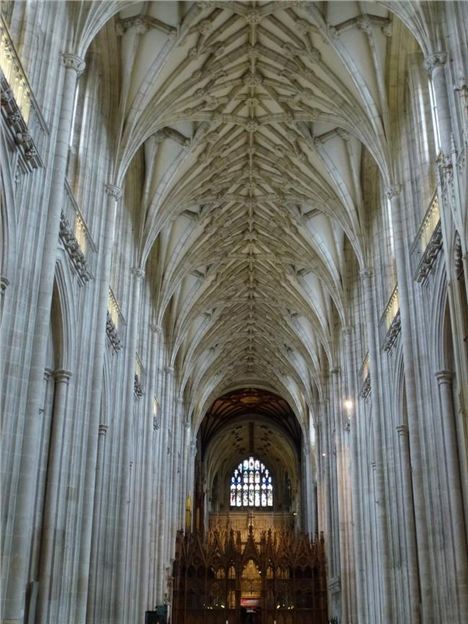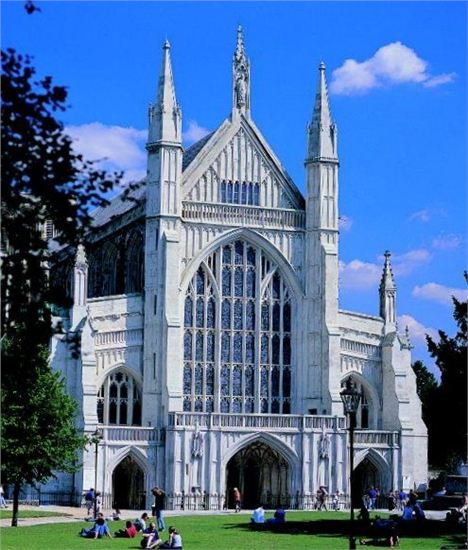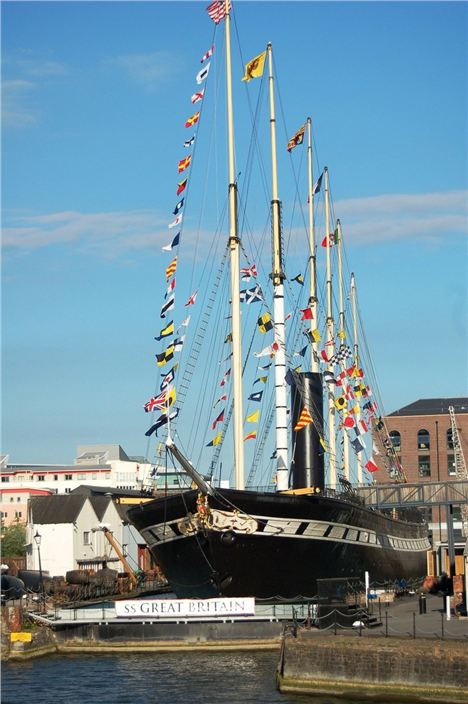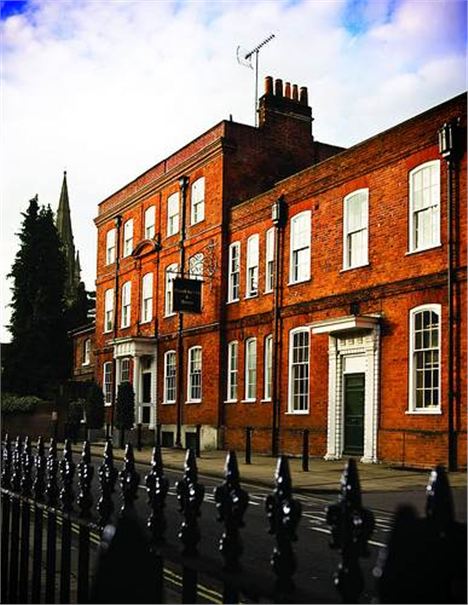WHEN did history start? By that I mean when did we begin to show much of an interest in the heritage left by our forebears, let alone cherish it? I suspect not very long ago.
Archaeological digs predating 1900 were a rarity – besides the Victorians were no respecters of their predecessors, the Georgians, who in turn took a dim view of all things chaotic and Medieval.
'Bristol's Hotel du Vin is arguably the most creative conversion of them all, formed from six Grade II warehouses dating back to the 1700s, known as The Sugar House, close to the historic docks city centre and 18th Century St Nicholas Market'
The question actually occurred to me beneath the magnificent vaulted ceiling of the longest Gothic Cathedral in Europe, Winchester. When it was first consecrated in 1093, the nearby Saxon "Old Minister" dating from 643 and the "New Minster" of 901 were summarily demolished. Winchester's third great Saxon abbey, the Nunnaminster, built by Alfred the Great's wife Queen Ealhswith in 903 and rebuilt around 1100, suffered the same fate soon after it was surrendered to Henry VIII's cash-hungry panjandrums in 1539.
 Winchester Cathedral's breathtaking interior
Winchester Cathedral's breathtaking interior
But it wasn't just buildings that were swept away. Inside Winchester Cathedral there are six "mortuary chests" filled with an assortment of skulls and bones thought to belong to former kings of Wessex and England including Egbert, Canute and William Rufus as well as St Swithun.
Bishop Henry of Blois first exhumed them in 1158 to re-inter them in lead coffers around the high altar before they were later moved to ten mortuary chests above stone screens. Then in 1642, during the English Civil War, Parliamentarian troops stormed the cathedral and toppled the chests in an act of sacrilege. They were gathered up and replaced, but it was impossible to know which bones went together. Respect!
 The Cathedral's dazzling front
The Cathedral's dazzling front
The Cathedral, also the last resting place of Jane Austen, whose grave is revered (though the stone makes no mention of her career as a writer) is the monumental must-see piece of heritage in England's charming former capital city.
Our bases for visiting this part of Hampshire and later Bristol, were two properties in the boutique Hotel du Vin chain, whose designers are celebrated for paying huge respect to historic buildings.
Hotel du Vin & Bistro in Winchester, the first in the chain, occupies a fine Queen Anne town house dating from around 1714 in the heart of the city, close to the main shopping streets, the medieval Buttercross monument and a few minutes' stroll from the cathedral.
With just 24 rooms including four "garden rooms" with their own front doors and patios surrounded by lavender plants, it is the smallest Hotel du Vin, but luxuriously appointed.
 Vintage style at the original HdV
Vintage style at the original HdV
Bedrooms are spacious and airy, sumptuously decorated and very comfortable with Egyptian linen and feather-light duvets. Tables and writing desks are furnished with magazines, stationery and information about the hotel and the sights and attractions of Winchester, while cupboards and wardrobes hide the mini-bar, television, hi-fi and tea and coffee making facilities. Our large bathroom boasted a deep bathtub, a walk-in, ultra efficient drench shower, plenty of fluffy towels and exclusive HdV bathroom products, which guests are invited to steal.
The candlelit Bistro, where we enjoyed a splendid dinner – duck à l'orange and excellent rack of lamb – is cosy and atmospheric, crammed with wine-related prints and pictures; fireplaces and corners are stacked with bottles, and the windows are all festooned with dried hops; the impressive, high-ceilinged drawing room also rich with period touches.
After a sound sleep and a tip-top breakfast – the full English and scrambled egg and smoked salmon – we resumed exploring Winchester's fascinating heritage - Arthur's Round Table (actually a romantic medieval reproduction) in the Great Hall and King Alfred's landmark statue overlooking his former capital. His last known resting place is commemorated at Hyde Abbey Garden just outside the city walls, where stood yet another Benedictine monastery destroyed in 1539. The bones of Alfred, his wife and their son, Edward the Elder, were lost.
We'd taken the scenic drive on the way to Winchester: through the Cotswolds, the magical village of Avebury with its monumental prehistoric stone circles and mysterious Silbury Hill (so much more fascinating than Stonehenge) and past the magnificent spire of Salisbury Cathedral in the centre of the city.
 Steam – powering Swindon's tourism industry
Steam – powering Swindon's tourism industry
And we resolved to do the same en route to Bristol. OK, so Swindon is hardly scenic, but it does boast STEAM, the museum of the Great Western Railway whose history dominates the town, and opposite, a huge designer outlet shopping mall housed in the superbly restored former railway works.
 Hotel Du Vin Bristol; below, one of its chic bedrooms
Hotel Du Vin Bristol; below, one of its chic bedrooms
Bristol's Hotel du Vin is arguably the most creative conversion of them all, formed from six Grade II warehouses dating back to the 1700s, known as The Sugar House, close to the historic docks city centre and 18th Century St Nicholas Market. Inside, the hotel employs a contemporary ‘loft-living ‘style, partly due to the almost total dereliction of the premises when acquired by the group.
 SS Great Britain in the Docks (Destination Bristol)
SS Great Britain in the Docks (Destination Bristol)
There's a walk-in cigar Room and the Sugar Bar, which specialises in its huge range of rum, evokes the building’s industrial past with exposed stone walls and raw wooden supports that reach from the floor to the beams in the ceiling; austerity avoided by the presence of large, scattered rugs, generous sink-in sofas, and invitingly low, leather armchairs. The Bistro too is characteristically warm and inviting.
The loft style prevails throughout all 40 rooms, each named after a celebrated wine house, with exposed beams and girders, rough hessian fabrics, steel and brickwork complemented by chic modern décor and warmed by natural woods and all the familiar HdV touches of luxury. The bathrooms are brilliant: huge sheets of opaque aquamarine glass separate walk-in showers from large freestanding baths.
Living history is fantastic - but it needs modern comforts!
Fact file
Hotel du Vin & Bistro
Southgate Street
WINCHESTER
Hampshire SO23 9EF
Telephone +44 (0) 1962 841414
Twin/Doubles from £120 (room only)
Hotel du Vin & Bistro
The Sugar House
Narrow Lewins Mead
BRISTOL BS1 2NS
Telephone +44 (0) 117 925
Twin/Doubles from £170 (room only)
Frequent promotions are offered via the Hotel du Vin website.













